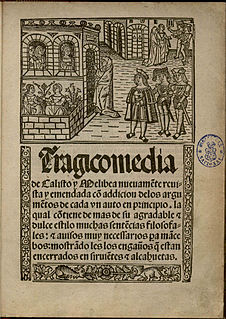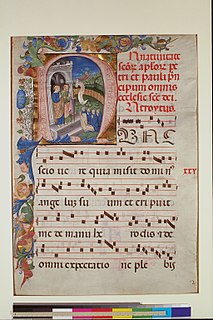 W
WEnzo Giudici was an Italian academic who specialized in French Renaissance literature, particularly Louise Labé and Maurice Scève. Giudici was also a publicist often compared with fascism.
 W
WRenaissance literature refers to European literature which was influenced by the intellectual and cultural tendencies associated with the Renaissance. The literature of the Renaissance was written within the general movement of the Renaissance, which arose in 14th-century Italy and continued until the 16th century while being diffused into the rest of the western world. It is characterized by the adoption of a humanist philosophy and the recovery of the classical Antiquity. It benefited from the spread of printing in the latter part of the 15th century.
 W
WAmadís de Gaula ; Portuguese: Amadis de Gaula, [ɐmɐdjʒ dɨ gawlɐ]) is a landmark work among the chivalric romances which were in vogue in sixteenth-century Iberian Peninsula, although its first version, much revised before printing, was written at the onset of the 14th century.
 W
WThe Book of the Courtier by Baldassare Castiglione, is a lengthy philosophical dialogue on the topic of what constitutes an ideal courtier or court lady, worthy to befriend and advise a Prince or political leader. The book quickly became enormously popular and was assimilated by its readers into the genre of prescriptive courtesy books or books of manners, dealing with issues of etiquette, self-presentation, and morals, particularly at princely, or royal courts, books such as Giovanni Della Casa's Galateo (1558) and Stefano Guazzo's The civil conversation (1574). The Book of the Courtier was much more than that, however, having the character of a drama, an open-ended philosophical discussion, and an essay. It has also been seen as a veiled political allegory. It offers a poignantly nostalgic evocation of an idealized milieu — that of the small courts of the High Renaissance which were vanishing in the Italian Wars — with a reverent tribute to the friends of Castiglione's youth, in particular the chastely married Duchess Elisabetta Gonzaga of Urbino, to whom Castiglione had addressed a sequence of Platonic sonnets and who died in 1526. The work was composed over the course of twenty years, beginning in 1508, and ultimately published in 1528 by the Aldine Press in Venice just before the author's death. An influential English translation by Thomas Hoby was published in 1561.
 W
WThe Castalian Band is a modern name given to a grouping of Scottish Jacobean poets, or makars, which is said to have flourished between the 1580s and early 1590s in the court of James VI and consciously modelled on the French example of the Pléiade. Its name is derived from the classical term Castalian Spring, a symbol for poetic inspiration. The name has often been claimed as that which the King used to refer to the group, as in lines from one of his own poems, an epitaph on his friend Alexander Montgomerie:
 W
WThe Tragicomedy of Calisto and Melibea, known in Spain as La Celestina is a work entirely in dialogue published in 1499. It is attributed to Fernando de Rojas, a descendant of converted Jews, who practiced law and, later in life, served as an alderman of Talavera de la Reina, an important commercial center near Toledo.
 W
WThe Western classical tradition is the reception of classical Greco-Roman antiquity by later cultures, especially the post-classical West, involving texts, imagery, objects, ideas, institutions, monuments, architecture, cultural artifacts, rituals, practices, and sayings. Philosophy, political thought, and mythology are three major examples of how classical culture survives and continues to have influence. The West is one of a number of world cultures regarded as having a classical tradition, including the Indian, Chinese, Judaic, and Islamic traditions.
 W
WDigital Scriptorium (DS) is a non-profit, tax-exempt consortium of American libraries with collections of pre-modern manuscripts, or manuscripts made in the tradition of books before printing. The DS database represents these manuscript collections in a web-based union catalog for teaching and scholarly research in medieval and Renaissance studies. It provides access to illuminated and textual manuscripts through online cataloging records, supported by high resolution digital images, retrievable by various topic searches. The DS database is an open access resource that enables users to study rare and valuable materials of academic, research, and public libraries. It makes available collections that are often restricted from public access and includes not only famous masterpieces of book illumination but also understudied manuscripts that have been previously overlooked for publication or study.
 W
WThe Erotemata (Ἐρωτήματα) are the first printed basic Greek grammar in use in Western Europe, written by Manuel Chrysoloras who was a pioneer is spreading Greek literature in Western Europe.
 W
WThe Five Orders of Architecture is a book on classical architecture by Giacomo Barozzi da Vignola from 1562, and is considered "one of the most successful architectural textbooks ever written", despite having no text apart from the notes and the introduction. Originally published in Italian as Regola delli cinque ordini d'architettura, it has been fully or partially translated in English with different titles, including Canon of the Five Orders of Architecture; Rules of the Five Orders of Architecture; Vignola: an elementary treatise on architecture comprising the complete study of the five orders, with indication of their shadows and the first principles of construction; The Five Orders of Architecture according to Giacomo Barozzio of Vignola, to Which are Added the Greek Orders; and The five orders of architecture, the casting of shadows and the first principles of construction based on the system of Vignola.
 W
WThe Grete Herball is an Early Modern encyclopedia and the first illustrated herbal produced in English. It is preceded by Richard Banckes's unillustrated Herball (1525), which was the first printed English herbal ever produced. The Grete Herball is a single volume compendium which details the medicinal properties of plants and some non-botanical items according to the system of humoralism. Confirmed editions were printed between 1526 and 1561, with many still in existence today. Its full title is "The grete herball: whiche geueth parfyt knowlege and under standyng of all maner of herbes & there gracyous vertues whiche god hath ordeyned for our prosperous welfare and helth: for they hele & cure all maner of dyseases and sekenesses that fall or mysfortune to all maner of creatoures of god created: practysed by many expert and wyse maysters, as Aucienna & other &c."
 W
WIl Guerrin Meschino is an Italian prose chivalric romance with some elements of verisimilitude, written by the Italian cantastorie and systematizer and translator from French, Andrea da Barberino, who completed it about 1410.
 W
WHistoria von D. Johann Fausten, the first "Faust book", is a chapbook of stories concerning the life of Johann Georg Faust, written by an anonymous German author. It was published by Johann Spies (1540–1623) in Frankfurt am Main in 1587, and became the main source for the play The Tragical History of Doctor Faustus by Christopher Marlowe and Goethe's closet play Faust, and also served as the libretto of the opera by Alfred Schnittke, also entitled Historia von D. Johann Fausten.
 W
WHypnerotomachia Poliphili, called in English Poliphilo's Strife of Love in a Dream or The Dream of Poliphilus, is a romance said to be by Francesco Colonna. It is a famous example of an incunable. The work was first published in 1499 in Venice. This first edition has an elegant page layout, with refined woodcut illustrations in an Early Renaissance style. Hypnerotomachia Poliphili presents a mysterious arcane allegory in which the main protagonist, Poliphilo pursues his love, Polia, through a dreamlike landscape. In the end, he is reconciled with her by the "Fountain of Venus".
 W
WIn Praise of Folly, also translated as The Praise of Folly, is an essay written in Latin in 1509 by Desiderius Erasmus of Rotterdam and first printed in June 1511. Inspired by previous works of the Italian humanist Faustino Perisauli De Triumpho Stultitiae, it is a satirical attack on superstitions and other traditions of European society as well as on the Western Church.
 W
WMem and Zin is a Kurdish classic love story written down in 1692 and is considered to be the épopée of Kurdish literature. It is the most important work of Kurdish writer and poet Ahmad Khani (1651-1707). Mam (Mamo) and Zin is based on a true story, laid down from generation to generation through oral tradition. The content is similar to a Romeo and Juliet story. The Mem-u Zin Mausoleum in Cizre province has become a tourist attraction.
 W
WFernando de Rojas was a Spanish author and dramatist, known for his only surviving work, La Celestina, first published in 1499. It is variously considered "the last work of the Spanish Middle Ages or the first work of the Spanish Renaissance".
 W
WSpanish Baroque Painting refers to the style of painting which developed in Spain throughout the 17th century and the first half of the 18th century. The style appeared in early 17th century paintings, and arose in response to Mannerist distortions and idealisation of beauty in excess, appearing in early 17th century paintings. Its main objective was, above all, to allow the viewer to easily understand the scenes depicted in the works through the use of realism, while also meeting the Catholic Church's demands for 'decorum' during the Counter-Reformation.
 W
WThe Spanish Golden Age is a period of flourishing in arts and literature in Spain, coinciding with the political rise of the Spanish Empire under the Catholic Monarchs of Spain and the Spanish Habsburgs. The greatest patron of Spanish art and culture during this period was King Philip II (1556-1598), whose royal palace, El Escorial, invited the attention of some of Europe's greatest architects and painters such as El Greco, who infused Spanish art with foreign styles and helped create a uniquely Spanish style of painting.
 W
WTrattato di architettura is an architectural theoretical book by Filarete.